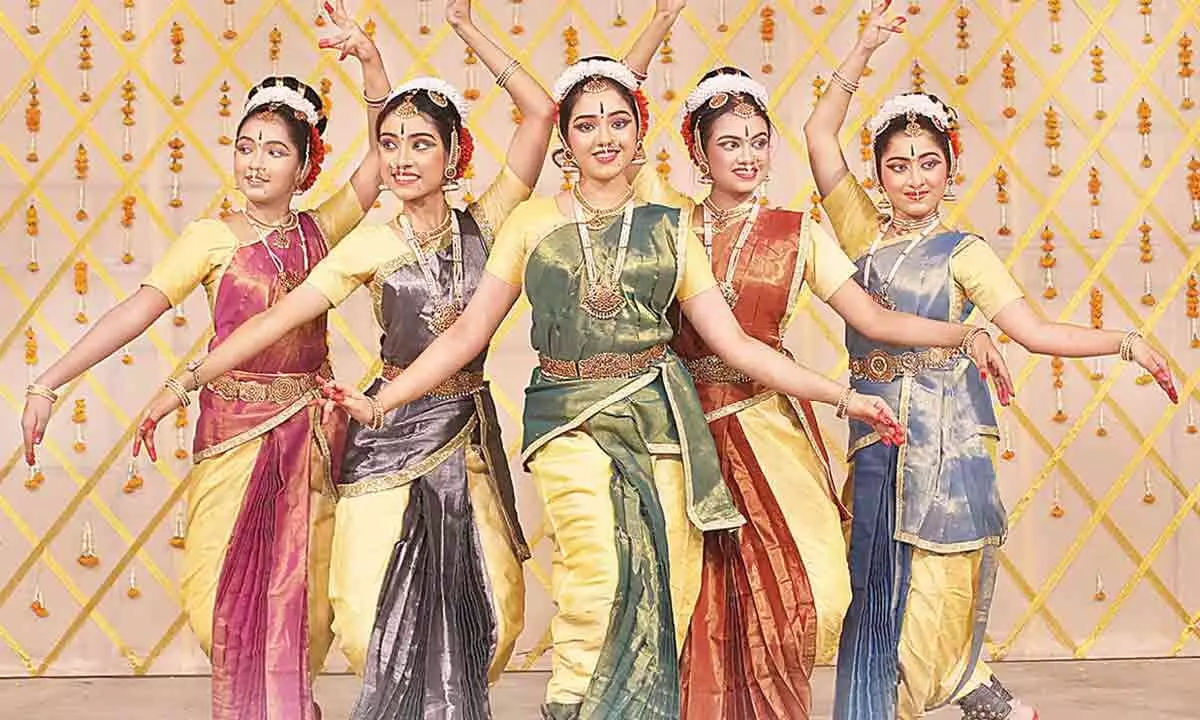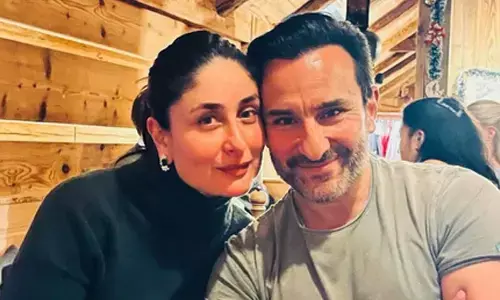Ramanavami celebrated with stunning classical dance

Ramanavami was celebrated with mesmerizing classical dance performances at Ramalayam, Jubilee Hills, showcasing the rich cultural heritage of India through vibrant choreography and expressive artistry
Ramanavami was celebrated at Ramalayam, Jubilee Hills with a series of recitals in classical art forms. The stage was decorated with saffron and white florets and spherical bunches of orange Marigold flowers in a festive manner.
The opening solo recital in Kuchipudi was by Pasumarthi Mruthyumjaya, who belongs to an illustrious traditional Kuchipudi family lineage of artistes. He is also an awardee of the prestigious Ustad Bismillah Khan Yuva Puraskar from the Central Sangeet Natak Akademi. His abhinaya was more on the dramatic side; nritta was vibrant and eye-catching. Athleticism and vigour combined with remarkable poise informed his movements. He radiated the majestic aura of the Sun God in the well-chosen first item - “Surya Stuthi” as this Divinity is the Ancestor of the Ikshvaku royal family of Lord Rama. The lord of the life-giving rays was exuberantly delineated. The Chariot of the Sun was shown traveling through the air, its winged steeds skillfully steered by the Charioteer Aruna. The majesty of the God with his Consort shone onstage in the artiste’s brilliant portrayal.
“Adigo Bhadradri” by Ramadasu was an appropriate choice considering the occasion. “Mandooka Shabdam” is a lengthy item packed with vignettes like “Gajendra Moksha” where the sharp revolving Discus of the Lord spins to sever the head of the Crocodile which has the Elephant King in its grasp. The divine weapon appears to succour the Elephant’s distressed lament to Lord Vishnu. “Jagadananda Karaka” a composition of Tyagaraja, which has breathtaking lyrics compact in style but dense with meaning, depicts Lord Rama as the joy of the world and the deeply beloved consort of Sita.
All the choreographies were by the legendary Guru Padmabhushan Vempati Chinna Satyam, having the mark of his inimitable style. Two of Dr. Himabindu Kanoj’s Kuchipudi students presented the mellifluous “Sri Ramachandra Kripalu” by Tulsidas with grace and elegance. Moving in synchronized flowing patterns, it was a veritable feast of rhapsody to enjoy! The mind is exhorted to pray to Lord Rama of lotus-like mien, fear-destroying, and with limitless brilliance. He is the friend of the helpless, slayer of Demons, scion of Raghu, and the righteous son of Dasaratha. He is adorned with a Crown and myriad jeweled Ornaments.
“Kulukuga Nadavaro” is authored by Annamacharya wherein he asks the Sakhis of Goddess Alamelumanga to carry her Palanquin carefully lest she feel any discomfort like her Garlands slipping or Anklets sounding to disturb her. This was delicately done by the students. The final brisk thillana was in Khamas. Rhythmically repetitive, syllables set to tune and melody, it involves moments where the dancer is frozen in a pose. The highlight of this piece was the splendid costumes of the students which looked like they were sprinkled with sparkling gold dust. The same cream colour for this set of students was set off with differing pastel shades in this luminous aharya.
The evening ended with a Bharatanatyam recital by the students of Maithri Rao. The starting piece turned out to be a trendsetter. The starkly bright red, violet, purple, blue, and green costumes had a bright sheen which gleamed with a satiny look under the lights. The Mysore Jathi was exhilarating to watch. Statuesque postures were finely expressed by the dancers. The next Shabdam was in praise of Krishna. Such items reflect episodes of various deities. Here the one who resides in Gokula has a face as beautiful as the Moon, whose body is compared to Rain Clouds and is always surrounded by Gopikas. The artistes brought out the descriptions vividly.
“Hari Mana” was a spiritually infused bhajan in Marathi. Here the theme was the restoration of cosmic order by Mahavishnu to the world when it is troubled or beset by chaos or evil. “Sri Ramachandra Kripalu” was again repeated in this different classical art form which enabled the audience to watch the Bharatanatyam interpretation of the same lyrics in a different tune, mood, and movements. This concluding piece was done with the same finesse as the earlier pieces thus showcasing the talents of these young students.














